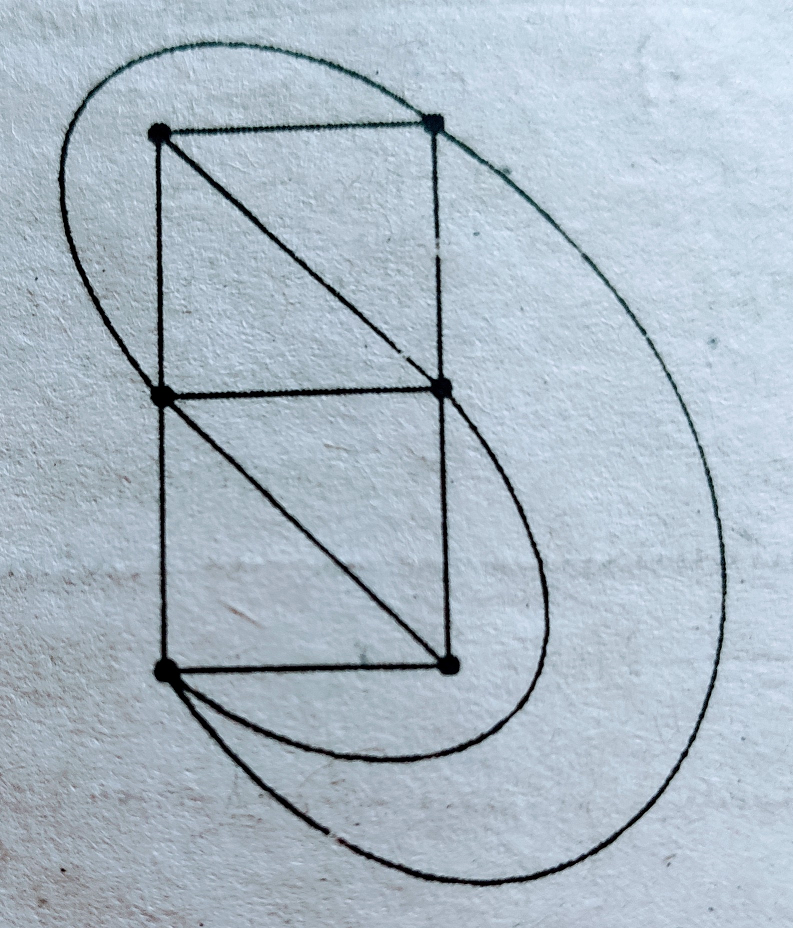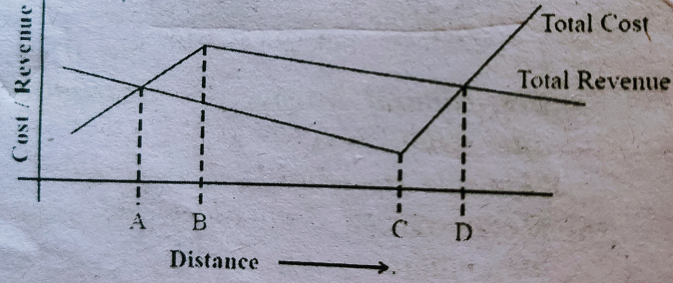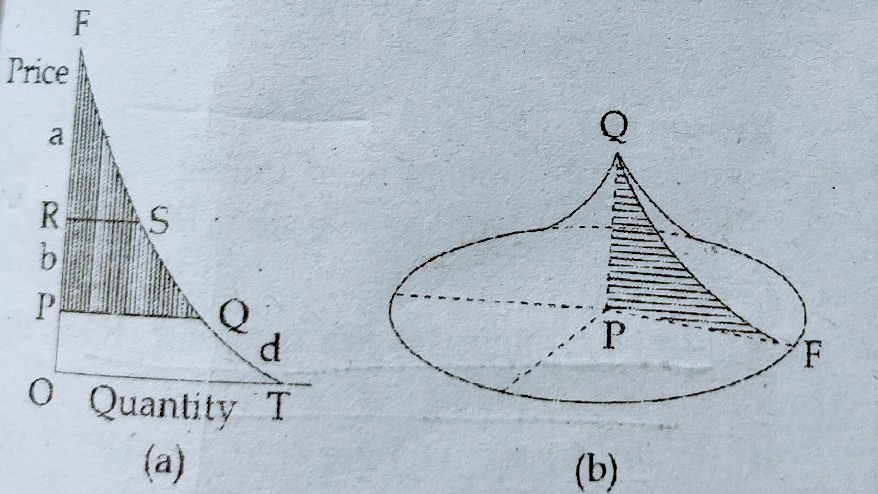 Multiple Choice Questions
Multiple Choice QuestionsWhich one of the following contributors made refinements to W.Christaller's central place by including concept of "city rich" sectors and "city poor" sectors ?
R.P. Mishra
B.J.L. Berry
Walter Isard
August Losch
How many number of intersecting links between six nodes are shown on the given figure ?

5
9
10
12
Which one of the following codes is correct to show the optimal location to profitability in different spatial cost/ revenue situations in digram given below ?

A
B
C
D
|
LIST I (Geographer) |
LIST II (Theory/Model) |
| (a) Philbrick | (1) Industrial Location |
| (b) Christaller | (2) Economic Landscape |
| (c) Losch | (3) Central Place |
| (d) Smith | (4) Areal functional oragnisation |
a-i , b-iii , c-iii , d-iv
a-iv , b-iii , c-i , d-ii
a-iv , b-iii , c-ii , d-i
a-i , b-ii , c-iv , d-iii
Which one of the following authors examined structure of urban settlements prior to the impact of large-scale industrialisation in book "The Pre-Industrial City Past and Present" ?
M. Pacione
G. Sjoberg
P . Hall
D. Dwyer
|
LIST I (Industries) |
LIST II (Acitivity/Technology) |
| (a) Cottage | (1) Petroleum refining |
| (b) Small | (2) Information Technology |
| (c) Major | (3) Locks Manufacturing |
| (d) Foot-loose | (4) Embroidry |
a-i , b-iv , c-ii , d-iii
a-iii , b-ii , c-iv , d-i
a-iv , b-iii , c-i , d-ii
a-ii , b-i , c-iii , d-iv
|
LIST I (Author) |
LIST II (Theory) |
| (a) Weber | (i) Minimum production cost |
| (b) Smith | (ii) Maximum profit |
| (c) Hotelling | (iii) Minimum transport cost |
| (d) Hoover | (iv) Market competition |
a-iii , b-ii , c-iv , d-i
a-i , b-ii , c-iii , d-iv
a-iii , b-iv , c-i , d-ii
a-i , b-ii , c-iv , d-iii
Which one of the following authors has given the concept of "Demand Cone" as shown in the diagram ?

Pareto
August Losch
Christaller
Weber
B.
August Losch
All of the following has been considered growing industrial countries except :
India
Indonesia
Brazil
China
ASSERTION (A) : Air transport is a very useful means of transport in mountainous and hilly areas.
REASON (R) : It is very difficult to construct means of roads and railways in mountainous regions.
Both (A) and (R) are true and (R) is the correct explanation of (A).
Both (A) and (R) are true but (R) is not the correct explanation of (A).
(A) is true , but (R) is false.
(A) is false , but (R) is true.
